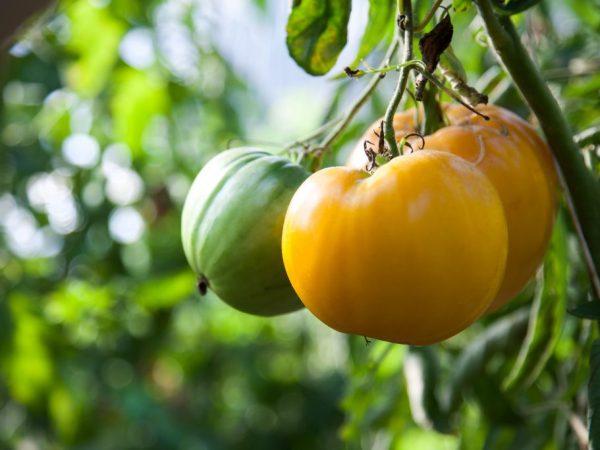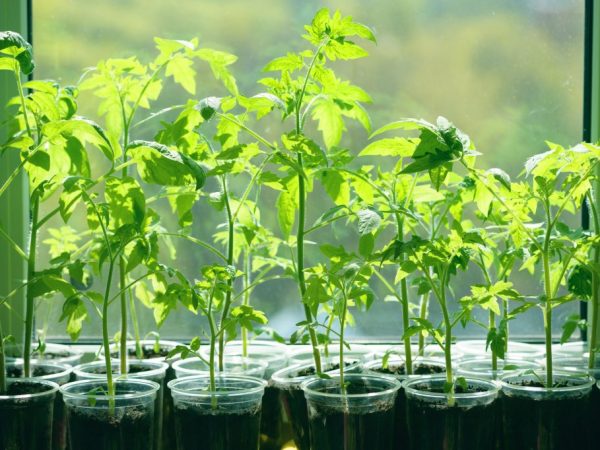Description and characteristics of the tomato King of Siberia
When deciding to grow tomatoes, we most often pay attention to the yield of the variety. But its full characteristics, as well as the methods of cultivation and processing, play an important role. Lovers - gardeners also like plants with fruits of a different color, yellow, orange or striped, it is beautiful and original. One of these, yellow-fruited varieties, is the tomato King of Siberia, which we, based on the reviews of gardeners, can be called unique.

Description and characteristics of the tomato King of Siberia
Variety characteristic
The King of Siberia, like all other tomatoes, belongs to the nightshade crops, whose homeland was South America. Our King of Siberia was bred by Siberian breeders. He got his name because of the huge, truly royal, fruits. Plant of indeterminate type, recommended for cultivation in a greenhouse in the middle zone of the country. In such rooms you feel as if you were in a Siberian garden.
The characteristic and description of a tomato, such as the giant tomato variety King of Siberia, consists of several points.
- The king of Siberia has a high yield.
- With proper agricultural practices, the time from emergence to the first harvest is about 125 days.
- When shaping, it is advisable to leave no more than two stems.
- The standard type, the tomato King of Siberia, is intended for cultivation in cold climates and in more southern regions.
- The variety is resistant to many diseases.
When grown outdoors, the shrub will be stronger but shorter in stature.
Description of tomatoes King of Siberia
Take the tomato King of Siberia, its description will begin with the features of the bush. The tomato bush is quite strong, but slightly leafy. The stems have leaves that look like maple leaves. At a height of up to 1.5 m, the first brushes appear at the level of 5 internodes. The brush is loose and bears up to 10 flowers. Abundant and simultaneous flowering.
After setting the fruit, it is even necessary to fix the fruit clusters themselves with tying. This is done so that the large weight of the fruit does not break the stems. Each tomato, at milky maturity, is light green in color. With growth and ripening, the fruits turn yellow and weigh up to 700g, each. Fruits of the variety, heart-shaped, with a hard skin, at the break have a sugary structure.
Fruit chambers are small, but there are enough seeds in each of them to collect seed. The pulp of the fruit is sugar-rich, tasty, and may have an orange color. This shade is determined by the presence of beta-carotene in the fruit.
Growing seedlings
The name of the tomato alone defines its cultivation in seedlings. Tomatoes King of Siberia are sown for seedlings in early March, for growing in heated greenhouses. And for unheated greenhouses, the dates are shifted by about 3 weeks. Seeds and planting soil are prepared in containers.
The composition of the soil for planting seeds includes:
- garden land;
- peat;
- mullein humus;
- ash.

Before planting in open ground, the seedlings must be hardened.
Before sowing, the seeds are treated with growth stimulants and weak potassium permanganate for 12 hours. Washed and slightly damp seeds, in an even layer, but not thickly, are laid out in containers. Above, again a layer of earth up to 1 cm. Then it is moistened with a spray bottle with warm water and covered with glass or polyethylene.
The temperature in containers should not exceed 25g during the day and be less than 18g at night. Watered by spraying, before emergence and after that. If condensation collects on the film and container walls, ventilation is necessary.
After the appearance of the second pair of leaves, the seedlings can be dived and fertilized. It is recommended to apply fertilizer at least 3 times in two months. If you plan to plant in the field, then a week before that it is necessary to harden the plants, exposing them for a short time, in the open sun. For greenhouse cultivation, hardening is not necessary.
Disembarkation and care
In the greenhouse, rows of future plantings are marked at a distance of 70 cm, plus paths. Between the bushes, in the rows, there must be a distance of at least 50 cm. The holes are stuffed, not deep, and the plants are planted at an angle, almost lying. Water the seedlings with warm water, under the root.
A garter is immediately carried out to the trellis, which must be very strong. When the plant reaches the desired height, the growth point is removed from it. The second stem is formed from the first stepson, the rest of the stepsons must be removed.
Further care consists in carrying out some procedures that are familiar to gardeners.
- Weeding is carried out by removing weeds.
- Watered with warm water when the soil is not completely dry.
- Fertilized with chemicals and organics.
- Destroy harmful insects.
- Harvested on time.
Loosening of the soil is carried out constantly, providing the plant with air for breathing. When watering, liquid fertilizers are applied, such as: boric acid or rotted manure, bird droppings.
Foliar treatment with boric acid improves the presentation of fruits, protects against diseases and repels pests. Other drugs that can be recommended for plant protection are Fitosporin, Fundazol, Bravo. All of them dissolve well and are applied according to the instructions on the packages.
Harvesting and processing
Huge yellow fruits must be harvested on time, without leaving a large and heavy crop on the bushes so that the plant does not weaken. The harvested fruits can be eaten fresh, salads and whole fruits. In ketchups and borsch dressings, they do not give color, but they give them excellent taste.
For color, you can add tomatoes of other, red varieties, then it will be good and more familiar. King of Siberia, this tomato will receive feedback from us, the very best in terms of cultivation and consumption.
Conclusion
By raising the King of Siberia, we can provide the family with fresh vitamins at a time when nature is just awakening. Heated greenhouses will help us with this. And beautiful-looking, huge yellow tomatoes will delight the housewives with their taste, diversify the family menu. Sugar delicious fruits will appeal not only to adults, but also to children, for their unusual color and sweet taste.

